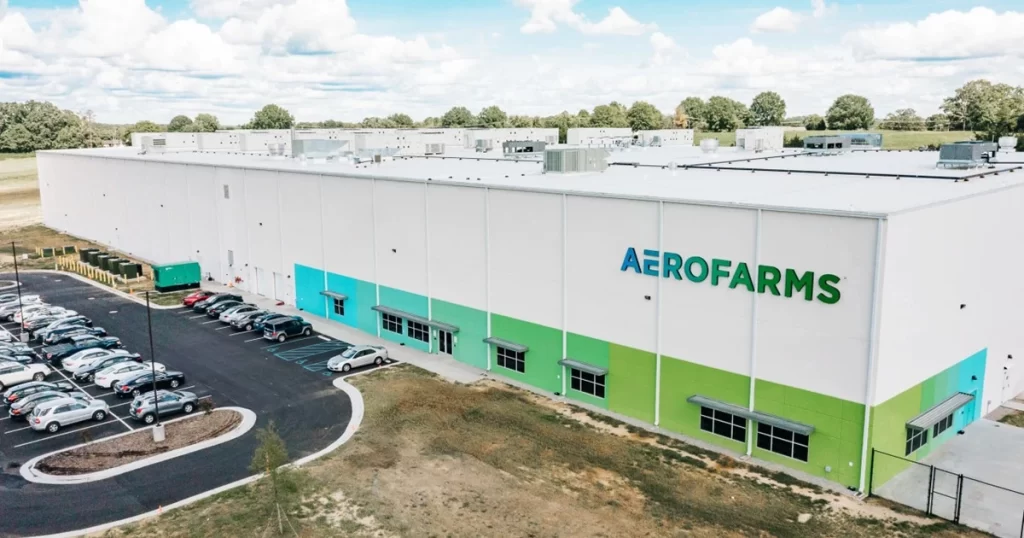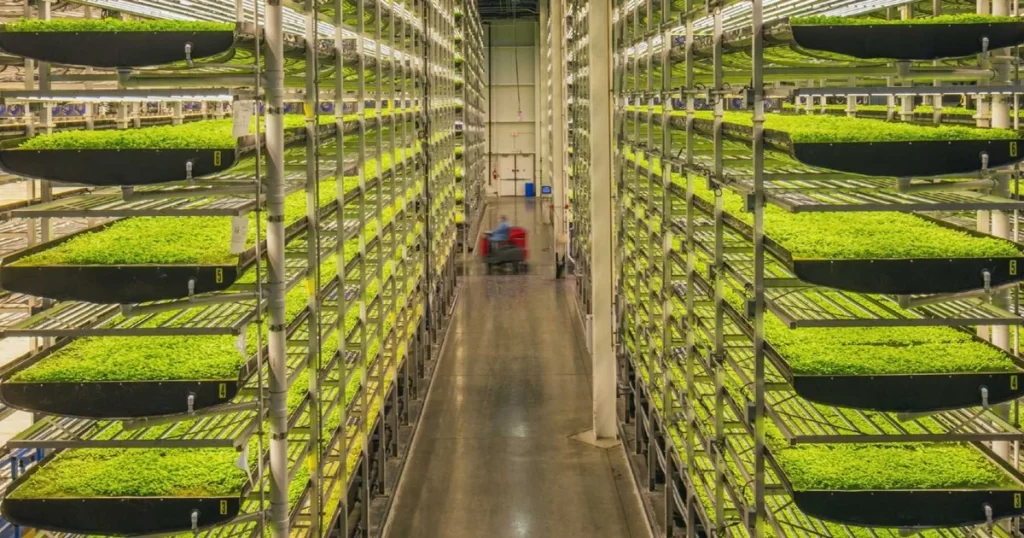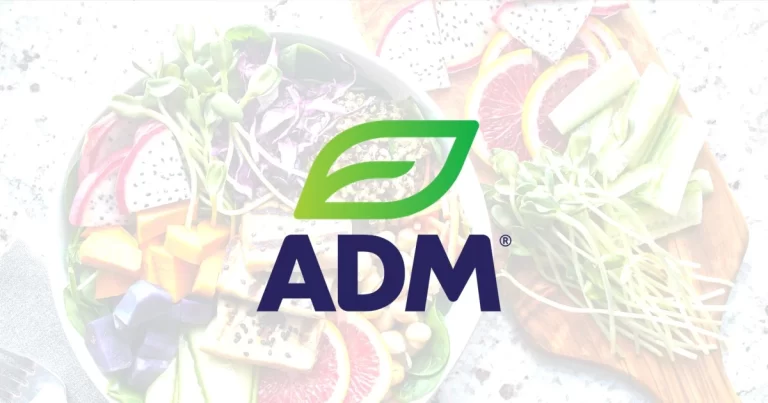Introduction
AeroFarms is reshaping the future of urban agriculture through its innovative vertical farming technologies and pioneering use of aeroponics. By harnessing cutting-edge controlled environment agriculture (CEA), AeroFarms has developed a highly efficient, sustainable approach to growing fresh, local produce year-round.
Founded with a vision to tackle the growing challenges of food security and environmental sustainability, AeroFarms has emerged as a global leader in vertical farming. This case study explores how the company’s technology-driven approach—centered on vertical farming and aeroponics—addresses critical issues in traditional agriculture, including limited urban land availability, high water consumption, and complex supply chains.
In this case study, we’ll dive deep into AeroFarms’ technological solutions, implementation strategies, and real-world impact. We’ll also examine the competitive landscape and highlight the company’s unique position in revolutionizing local food production.
Company Overview
Founded in 2004, AeroFarms has established itself as a global pioneer in vertical farming and aeroponics. Headquartered in Danville, Virginia, the company’s mission is to revolutionize agriculture by building environmentally responsible, high-yield indoor farms that deliver fresh, nutritious produce year-round.
From its early days experimenting with innovative growing systems in the Finger Lakes region of New York, AeroFarms has continually pushed the boundaries of sustainable agriculture. Today, the company’s growth and impact can be summarized as follows:
- Patented Aeroponics: AeroFarms’ mist-based nutrient delivery system distinguishes it from competitors using hydroponics. This technology optimizes water efficiency, eliminates the need for pesticides, and delivers consistent, high-quality produce.
- Flagship Facilities: AeroFarms operates some of the world’s largest indoor vertical farms, including a 70,000-square-foot site in Newark, New Jersey.
- Research and Development Focus: The company invests heavily in R&D to refine plant science, lighting, and automation technologies, ensuring high yields and superior quality.
- Local Food Production: By growing crops close to consumers, AeroFarms reduces transportation emissions and delivers fresher, more sustainable produce.
With a dedicated team of scientists, engineers, and agricultural experts, AeroFarms is transforming how we grow and consume food—one vertical farm at a time.
Problem Statement: Rethinking Food Systems in Urban Landscapes
As urban populations continue to swell, traditional agricultural models face mounting challenges in meeting the demand for fresh, nutritious produce. By 2050, it’s projected that nearly 80% of the global population will reside in urban areas, intensifying the strain on existing food supply chains.
Key Challenges in Urban Agriculture
- Limited Arable Land: Urban expansion often leads to the reduction of available farmland. For instance, in cities like Los Angeles and New York, the high cost of land makes it prohibitive for agricultural use.
- Resource Intensity: Traditional farming methods are water-intensive. In regions like India, agriculture consumes approximately 80% of the country’s water resources, exacerbating water scarcity issues.
- Supply Chain Vulnerabilities: Transporting produce over long distances not only increases carbon emissions but also reduces the freshness and nutritional value of food by the time it reaches urban consumers.
- Food Insecurity: Urban “food deserts” are areas where access to affordable, healthy food is limited. In the U.S., an estimated 53 million people live in such areas, highlighting the pressing need for localized food production.
The Imperative for Sustainable Solutions
The convergence of these challenges underscores the necessity for innovative agricultural practices that can thrive within urban settings. Solutions must prioritize:
- Efficiency: Maximizing yield per square foot using minimal resources.
- Sustainability: Reducing reliance on water and eliminating the need for harmful pesticides.
- Proximity: Producing food closer to where it’s consumed to enhance freshness and reduce transportation emissions.
AeroFarms addresses these imperatives through its advanced vertical farming systems, leveraging aeroponics to cultivate crops in controlled environments. This approach not only conserves resources but also ensures a consistent supply of fresh produce to urban communities, redefining the future of sustainable urban agriculture.
Solution: AeroFarms’ Vertical Farming Technologies
AeroFarms has positioned itself at the forefront of urban agriculture by developing cutting-edge vertical farming technologies powered by aeroponics. This integrated approach allows the company to tackle the challenges of limited space, resource constraints, and sustainability in modern cities.
Aeroponics: The Heart of Innovation
Unlike hydroponics, which submerges plant roots in water, AeroFarms’ aeroponic system suspends plant roots in air and mists them with a precise, nutrient-rich solution. This method delivers several advantages:
- Water Efficiency: Uses up to 95% less water than traditional farming.
- No Pesticides: The controlled environment eliminates pests, reducing chemical use.
- Faster Growth Cycles: Crops can be harvested in 12-14 days compared to 30-45 days in soil-based farming.
- Higher Yields: Vertical stacking allows for 390 times more productivity per square foot than conventional farming.
Vertical Farming Systems
AeroFarms’ vertical farming design maximizes space utilization in urban environments by stacking growing trays vertically under specialized LED lighting. This design enables year-round production regardless of weather or location.
- Custom LED Lighting: Tailored light spectrums for different crops, enhancing photosynthesis and improving taste and nutrition.
- Climate Control: Advanced sensors regulate temperature, humidity, and airflow, maintaining optimal growing conditions.
- Data-Driven Agriculture: Real-time monitoring of plant health, nutrient levels, and growth rates ensures consistent, high-quality yields.
Technological Differentiation
To highlight how AeroFarms stands out, here’s a comparative look at its vertical farming system versus conventional farming and basic hydroponic setups:
| Feature | Traditional Farming | Basic Hydroponics | AeroFarms Aeroponics |
|---|---|---|---|
| Water Usage | Very high | Moderate | Extremely low (95% less) |
| Pesticide Requirement | High | Low | None |
| Growing Medium | Soil | Water-based substrate | Mist-based nutrient delivery |
| Crop Cycle Time | 30-45 days | 20-30 days | 12-14 days |
| Productivity per sq. foot | Baseline | 2-3x higher | Up to 390x higher |
| Automation & Monitoring | Limited | Moderate | Fully integrated |
Controlled Environment Agriculture (CEA)
AeroFarms integrates CEA principles to create a fully optimized growing environment, bringing several additional benefits:
- Scalability: Facilities can be built in urban warehouses, retrofitted buildings, or custom-designed structures.
- Reduced Environmental Impact: Locating production near consumers minimizes transportation emissions and spoilage.
- Enhanced Food Safety: Indoor farming prevents contamination from external pollutants, leading to cleaner, safer produce.
Technology Integration
AeroFarms invests heavily in technology to stay ahead in the vertical farming industry. Key technological elements include:
- Machine Learning and AI: Used to optimize lighting, irrigation, and nutrient delivery, improving efficiency and yields.
- Robotics and Automation: Streamline planting, harvesting, and monitoring processes.
- Sustainable Energy Practices: Integration of renewable energy sources and energy-efficient systems to reduce environmental impact.
By combining vertical farming and aeroponics, AeroFarms has developed a sustainable, scalable solution to urban agriculture’s toughest challenges. Its technology-driven approach is transforming how fresh, nutritious produce is grown and delivered—reshaping the future of food for a rapidly urbanizing world.
Implementation Process
AeroFarms’ journey from concept to large-scale vertical farming highlights a strategic, data-driven approach that ensures consistent, high-quality production in urban environments.
Facility Design and Site Selection
AeroFarms targets urban warehouses and underutilized industrial buildings to minimize land costs and maximize proximity to consumers. Key steps include:
- Structural Assessment: Confirming buildings can support multi-tiered vertical systems.
- Utility Upgrades: Installing energy-efficient lighting, water systems, and climate controls.
Pilot Testing and Optimization
Before full-scale deployment, AeroFarms tests each facility’s systems to refine crop recipes and environmental conditions:
- Crop Trials: Testing different greens and herbs under various light and nutrient setups.
- Data Collection: Real-time monitoring of growth, yield, and resource usage to optimize performance.
Scaling Production
Once pilots meet targets, AeroFarms scales production using automation and monitoring systems:
- Automated Seeding and Harvesting: Boosts efficiency and reduces labor costs.
- Quality Assurance: Standardized processes ensure consistent, high-quality output.
Stage Key Activities
| Stage | Key Activities |
|---|---|
| Site Selection | Assess infrastructure, utilities |
| Pilot Testing | Optimize lighting, nutrients, yields |
| Production Scale | Implement automation, ensure consistency |
Community Integration
AeroFarms prioritizes community impact by creating jobs, partnering with local schools, and supplying fresh produce to local markets, enhancing urban food security and sustainability.
Competitive Analysis: AeroFarms vs. Industry Players
As the demand for sustainable, local food production grows, the vertical farming industry has attracted numerous players—each bringing unique technologies and business models to the table. AeroFarms’ commitment to aeroponics and advanced technology sets it apart from competitors.
Key Competitors
Several companies are making strides in vertical farming and controlled environment agriculture (CEA), including:
- Plenty: Focuses on hydroponic vertical farming with advanced AI-driven crop management.
- Bowery Farming: Leverages hydroponics, proprietary software, and automation to optimize yields.
- Infarm: Specializes in modular hydroponic units that can be installed in supermarkets and restaurants for hyper-local production.
AeroFarms’ Competitive Edge
AeroFarms differentiates itself through its proprietary aeroponic technology, which offers superior resource efficiency, faster crop cycles, and pesticide-free production. The company’s large-scale facilities, strong R&D focus, and community integration further strengthen its market position.
| Feature/Company | AeroFarms Aeroponics | Plenty Hydroponics | Bowery Hydroponics | Infarm Hydroponics |
|---|---|---|---|---|
| Growing Technique | Aeroponics (mist-based) | Hydroponics (nutrient solution) | Hydroponics (nutrient solution) | Hydroponics (modular units) |
| Water Usage | 95% less than traditional | ~90% less than traditional | ~90% less than traditional | ~90% less than traditional |
| Pesticide Use | None | Minimal | Minimal | Minimal |
| Crop Cycle | 12-14 days | 18-24 days | 18-24 days | 18-24 days |
| Facility Scale | Large indoor warehouses | Indoor vertical farms | Indoor vertical farms | In-store modular units |
| Data & AI Integration | Extensive real-time monitoring | AI-driven crop optimization | Proprietary farm OS | Localized farm management |
| Community Engagement | Strong local partnerships | Focus on tech-driven scale | Urban sustainability focus | Retail partnerships |
Key Advantages for AeroFarms
- Proprietary Aeroponics: Offers higher yields and resource efficiency compared to hydroponic systems.
- Scalability: Facilities can be established in urban warehouses, maximizing proximity to markets.
- Research & Development: Continuous innovation in lighting, nutrients, and automation keeps AeroFarms at the cutting edge.
- Community Impact: Strong focus on local job creation, education, and partnerships with community organizations.
While competitors like Plenty, Bowery, and Infarm have made significant advances in vertical farming, AeroFarms’ unique aeroponic approach, technological integration, and community engagement position it as a leader in the sustainable agriculture space. As the industry evolves, AeroFarms continues to set benchmarks for efficiency, yield, and urban food security.
Impact Analysis: Redefining Urban Agriculture’s Footprint
AeroFarms’ innovative approach to vertical farming and aeroponics has created a significant, measurable impact across economic, environmental, and community dimensions. By transforming the way fresh produce is grown in cities, the company demonstrates how technology and sustainability can work together to reshape the future of food.
Economic Impact
AeroFarms’ vertical farms drive economic benefits that extend beyond the farm walls:
- Job Creation: Each facility employs a team of growers, engineers, and operations specialists—many recruited from local communities. For example, the Newark facility alone created over 100 full-time positions.
- Local Supply Chains: By producing food closer to consumers, AeroFarms reduces transportation costs and supports local distribution networks.
- Operational Efficiency: Data-driven farming techniques lower input costs and increase yields, improving profitability while maintaining product quality.
Environmental Impact
AeroFarms’ aeroponic systems deliver transformative environmental benefits that set new standards in sustainable agriculture:
- Water Conservation: Uses up to 95% less water than traditional farming methods—a crucial advantage in water-stressed regions.
- Reduced Carbon Footprint: Locating production in urban centers cuts down on “food miles,” reducing emissions from transportation.
- No Pesticides: Eliminates chemical runoff into soil and water, contributing to healthier ecosystems.
- Land Efficiency: Produces 390 times more yield per square foot compared to conventional farming, preserving valuable land resources.
Community Impact
AeroFarms also prioritizes community engagement and education, creating positive ripple effects:
- Access to Fresh Produce: Supplies local grocery stores, restaurants, and farmers’ markets, improving access to nutritious, pesticide-free greens.
- Education Partnerships: Collaborates with schools and community organizations to teach students about sustainable agriculture and nutrition.
- Healthier Food Choices: Provides consistent, reliable sources of fresh produce, contributing to better dietary habits in urban communities.
Financial Performance
AeroFarms’ financial performance highlights the commercial viability of its innovative model:
- Revenue Growth: AeroFarms has achieved consistent year-over-year revenue increases, driven by high consumer demand for fresh, local produce.
- Facility Expansion: With the opening of its Danville, Virginia facility and plans for further global expansion, AeroFarms demonstrates a scalable business model.
- Investment Milestones: The company has secured over $200 million in funding from prominent investors, signaling strong market confidence in its vertical farming technologies.
- Operational Efficiency: Data-driven farming and automation enhance cost efficiency, driving profitability at scale.
| Financial Metric | AeroFarms Performance |
|---|---|
| Total Funding Raised | Over $200 million |
| Revenue Growth | Consistent year-over-year growth |
| Facility Expansion | Multiple large-scale facilities |
| Cost Efficiency | Improved margins via automation |
Challenges and Future Outlook
Despite its success in revolutionizing vertical farming through aeroponics, AeroFarms has faced—and continues to navigate—a range of challenges on its journey to scale.
Challenges
- High Initial Investment: Building and retrofitting vertical farming facilities requires significant upfront capital. Each facility demands advanced infrastructure, LED lighting systems, and precision climate control—costs that can exceed traditional agricultural investments.
- Technical Complexity: Managing aeroponic systems at scale requires specialized expertise. Maintaining consistent nutrient delivery, monitoring real-time plant health, and integrating automation systems can present operational challenges.
- Market Adoption: While consumer interest in sustainable, local produce is growing, educating buyers and building supply chains to compete with traditional agriculture takes time and resources.
Future Outlook
AeroFarms remains committed to overcoming these challenges through continuous innovation and strategic planning. Key initiatives shaping the company’s future include:
- Global Expansion: Building new vertical farming facilities in major urban centers worldwide to meet growing demand for fresh, local produce.
- Technology Integration: Enhancing AI, machine learning, and automation to optimize yields, reduce costs, and improve efficiency.
- Sustainability Leadership: Investing in renewable energy, reducing carbon emissions, and maintaining water conservation efforts.
- Community Partnerships: Strengthening ties with local communities through education, job creation, and partnerships that promote healthier food systems.
AeroFarms envisions a future where vertical farming and aeroponics are integral to resilient, sustainable urban food systems worldwide. By addressing operational challenges head-on and investing in innovation, the company is poised to lead the next era of agriculture—where technology, sustainability, and community converge to feed our growing cities.
Conclusion
AeroFarms stands as a testament to the transformative power of vertical farming and aeroponics in addressing the complex challenges of urban agriculture. Through its innovative technology, strategic community integration, and strong financial growth, AeroFarms is reshaping the future of fresh, local food production.
Key Takeaways:
- Vertical Farming Leadership: AeroFarms’ commitment to vertical farming and aeroponics positions it as a pioneer in sustainable urban agriculture.
- Efficiency and Sustainability: Its aeroponic technology reduces water usage by up to 95%, eliminates pesticides, and achieves yields 390 times higher than traditional farming.
- Economic and Community Impact: AeroFarms creates local jobs, strengthens urban food systems, and engages with communities through education and outreach.
- Financial Viability: The company’s strong funding profile, operational efficiency, and consistent revenue growth underscore the commercial promise of vertical farming.
- Future-Focused Innovation: With plans for global expansion and further technological integration, AeroFarms is poised to lead the charge in sustainable food production for a rapidly urbanizing world.
AeroFarms exemplifies how technology-driven agriculture can not only meet the demands of growing urban populations but also support healthier communities and a more sustainable planet. As cities continue to expand, AeroFarms’ approach offers a blueprint for the future of farming.





